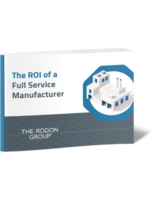ATA supports accelerated ATC modernization.
Press Release Summary:
ATA testified before Subcommittee on Aviation of Senate Committee on Commerce, Science, and Transportation that reauthorization of FAA programs and funding must ensure that air traffic control modernization be done in next several years through key technologies and procedures called NowGen. According to ATA President and CEO, James C. May, modernized system will stimulate economy, create jobs, yield environmental benefits, and enable U.S. airlines to compete against global competitors.
Original Press Release:
ATA Testifies That FAA Reauthorization Must Include Acceleration of System Modernization through "NowGen"
WASHINGTON, May 13, 2009 - The Air Transport Association of America (ATA), the industry trade organization for the leading U.S. airlines, today testified before the Subcommittee on Aviation of the Senate Committee on Commerce, Science and Transportation that reauthorization of Federal Aviation Administration (FAA) programs and funding must ensure that air traffic control (ATC) modernization be done early - in the next several years rather than over the next decade - through a suite of key technologies and procedures being called NowGen.
"It is imperative that Congress enable FAA to move forward promptly with its NextGen modernization program and authorize its acceleration through NowGen, which will deliver many of NextGen's benefits much sooner," said ATA President and CEO James C. May. "Now is the time for all of us to work together to make ATC modernization a national priority. A modernized system will stimulate the nation's economy, create jobs, yield environmental benefits and enable U.S. airlines to compete effectively against global competitors."
May reiterated to the committee that today's outdated ATC system significantly contributes to delays and disruptions that could be avoided when NextGen is implemented. A modernized, satellite-based system will reduce the more than $40 billion that delays cost the economy, the airlines and their passengers. In contrast to today's ATC system, a modernized system will enable planes to fly more direct, efficient routes, significantly reducing fuel burn and emissions.
"The U.S. airline industry cannot sustain its vital role of transporting people and goods, and continue to be a national economic engine, if the government infrastructure that it depends on - the ATC system - remains an impediment to efficiency and growth," said May.
ATA says that it is possible to fully transform the system in the next few years. By accelerating several key NextGen components and investing in proven technologies and related procedures, much of NextGen can be transformed into NowGen to deliver immediate benefits. But ATA believes it is time to alter the traditional approach to funding FAA operations and infrastructure development.
"The principle of fair and equitable funding of the ATC system should be imbedded in reauthorization legislation. What groups pay for ATC services should be aligned with their consumption of those services," said May.
In his testimony, May said that FAA reauthorization legislation should embrace new thinking and new ideas about infrastructure funding, including: giving the FAA bonding authority to issue tax credit bonds, making NextGen eligible for funding from a National Infrastructure Bank, and significantly increasing general fund contributions. This process should involve all stakeholders.
May also noted that airlines and their customers - through passenger facility charges (PFCs), airport improvement program (AIP) funds and rates and charges combined - spend nearly $13 billion annually underwriting airport expenses.
"We don't question the airports' need for sufficient funds, but in today's economic environment, their continued push for higher PFCs and AIP funds is out of sync with economic reality," said May. "This FAA reauthorization legislative process offers an opportunity for Congress to make aviation a priority by establishing a strong, forward-looking national aviation policy. Congress should take advantage of this opportunity."
May concluded by saying that the airlines' request of Congress is simple: "Invest in our infrastructure and resist those that see airlines and our passengers as the aviation equivalent of an ATM - Do no harm!"
ATA airline members and their affiliates transport more than 90 percent of all U.S. airline passenger and cargo traffic. For additional industry information, visit www.airlines.org.




